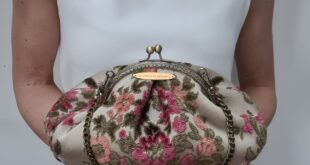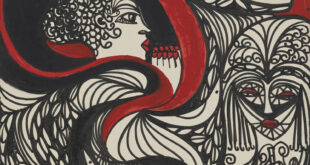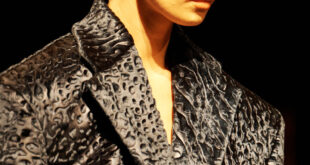
An important Venetian brand with unchanged charm and always on the top. A brand that renews with time but always in respect of its tradition.

Fortuny textiles factory was opened in 1921 in Giudecca Island in Venice where, once upon a time, was an ancient convent. The company was founded by Mariano Fortuny, painter, set designer, photographer, collector and designer of dresses that have become the foundation in fashion history, like as the tunic Delphos or the shawl Knossos.
Mariano Fortuny y Madrazo was born on 1871 in Granada, Spain, from a family of well known artists. He demonstrated to be a talented painter, but during his life he has had the opportunity to fully reveal his eclectic genius. His mother, Doña Cecilia, moved to Paris with her sons Mariano and Maria Luisa after the death of their father then, in 1889, the family established in Venice. Mariano travelled a long time to draw inspiration from European, Greek and Egyptian art. The influence of Richard Wagner, famous composer, thinker and writer, left an important print in Fortuny’s creativity, helping him to define his aesthetical standards. Curious and ingenious, Mariano Fortuny was not only an eclectic and prolific painter, engraver, sculptor and photographer, but also an architect and an inventor. In fact he usually produced also the photographic paper that he used, bound his books, and planned his lights and furniture. He realized one of the first rheostat switches, invented a propellant for boats, composed colours and tinctures on his own, manufactured his paintbrushes, planned and built his machinery all on his own. Moreover Fortuny updated the stage lighting, giving impulse to design through the “Fortuny Dome” that applied his theories on indirect and diffuse lighting.
In Paris, in 1897, the artist met Henriette Negrin who became his muse. Afterwards she moved in his home and study of Venice (Palazzo Pesaro degli Orfei) and, some years later, they married. Fortuny started off in fashion in 1907 with the tunic Delphos, tightly pleated and inspired by Greek’s sculptures: a versatile and elegant dress. This revolutionary kind of dress emphasized the female shapes and movements; it is not a case that one of the most famous dancers, Isadora Duncan, became very fond of it. Proust described Fortuny’s dresses and tissues in his work Recherche, giving them a characterizing role of representative of time and place of that epoch. In the end Mariano Fortuny dedicated to the study and realization of his famous fabrics, born from his knowledge of the art techniques, design and chromatic virtuosity. He continued to cultivate his art until the last day of his life and he died in his home-and-study of Venice, in 1949.
 Today “Palazzo Pesaro degli Orfei” is the base of Fortuny Museum that, keeping intact its owner’s furniture, hosts innovative and important contemporary art exhibitions. The incomparably textiles of Fortuny are resistant, practical and with the passage of time they become even more beautiful. Treated with care, these fabrics last forever, evoking a past charm and expressing the cottons natural luxury with harmony. Thanks to the interest and application of the Countess Elsie Lee Gozzi first and, more recently, of the Riad family, Fortuny’s fabrics production continues, making use of the same secret procedures, printing techniques and the looms projected by Mariano Fortuny a century ago. The artisans that followed one another during all this time handed down each other the necessary acknowledgement to realize colours and print fabrics, processes nowadays still secret, considering also that the access to the factory is forbidden to the outsiders. The current company keeps production at a semi-industrial and handmade level, using the same type of Egyptian cotton and the same colourings resulting from organic substances, with the addition of metals to create golden and silvered colourings. The result of each dyeing and printing process is unique and is subjected to variations owing to the case, climate conditions or the dose of pigments. The colour, to whom is dedicated the new collection Colourismo, is the distinctive element of the Fortuny’s fabric all along. In the just launched new collection are included two unpublished drawings of the founder, discovered in the archives of the factory: Girandole and Nuvole. The new pattern, Saint-Chapelle, resumes the style of the decorations more essential and linear realized by Fortuny. Unseen and luminous colourings associate to the moving lines of the drawings accentuating contrasts, so to underline an elegant chromatic balance with greens that turn into blues, gold into pink and black into silver.
Today “Palazzo Pesaro degli Orfei” is the base of Fortuny Museum that, keeping intact its owner’s furniture, hosts innovative and important contemporary art exhibitions. The incomparably textiles of Fortuny are resistant, practical and with the passage of time they become even more beautiful. Treated with care, these fabrics last forever, evoking a past charm and expressing the cottons natural luxury with harmony. Thanks to the interest and application of the Countess Elsie Lee Gozzi first and, more recently, of the Riad family, Fortuny’s fabrics production continues, making use of the same secret procedures, printing techniques and the looms projected by Mariano Fortuny a century ago. The artisans that followed one another during all this time handed down each other the necessary acknowledgement to realize colours and print fabrics, processes nowadays still secret, considering also that the access to the factory is forbidden to the outsiders. The current company keeps production at a semi-industrial and handmade level, using the same type of Egyptian cotton and the same colourings resulting from organic substances, with the addition of metals to create golden and silvered colourings. The result of each dyeing and printing process is unique and is subjected to variations owing to the case, climate conditions or the dose of pigments. The colour, to whom is dedicated the new collection Colourismo, is the distinctive element of the Fortuny’s fabric all along. In the just launched new collection are included two unpublished drawings of the founder, discovered in the archives of the factory: Girandole and Nuvole. The new pattern, Saint-Chapelle, resumes the style of the decorations more essential and linear realized by Fortuny. Unseen and luminous colourings associate to the moving lines of the drawings accentuating contrasts, so to underline an elegant chromatic balance with greens that turn into blues, gold into pink and black into silver.
 The current owners, Mickey and Maury Riad, besides bringing on with passion and devotion the tradition of Fortuny, they have begun a gradual innovation, both in products and distribution. In this frame they added the realization of products and accessories such as vases, lamps and ceiling lamps, in cooperation with some of the most important Italian companies. Although the head quarter is in Manhattan, at the Decoration and Design Building, the nowadays Fortuny company is giving a new glory to the ancient Venetian factory which includes in its structure a cosy and elegant showroom for its clients, overlooking a lush neoclassic with statues, fountains and columns, in the center of which there is a luxurious private big pool. A magic place that guards a heritage made of history, culture, art and design dedicate to lovers of the exclusive refining of Fortuny’s fabrics, among the most precious of made in Italy. www.fortuny.com
The current owners, Mickey and Maury Riad, besides bringing on with passion and devotion the tradition of Fortuny, they have begun a gradual innovation, both in products and distribution. In this frame they added the realization of products and accessories such as vases, lamps and ceiling lamps, in cooperation with some of the most important Italian companies. Although the head quarter is in Manhattan, at the Decoration and Design Building, the nowadays Fortuny company is giving a new glory to the ancient Venetian factory which includes in its structure a cosy and elegant showroom for its clients, overlooking a lush neoclassic with statues, fountains and columns, in the center of which there is a luxurious private big pool. A magic place that guards a heritage made of history, culture, art and design dedicate to lovers of the exclusive refining of Fortuny’s fabrics, among the most precious of made in Italy. www.fortuny.com
By Clara Dodino
 Collection Pan Arab Luxury Magazine
Collection Pan Arab Luxury Magazine


